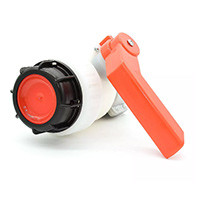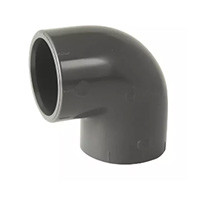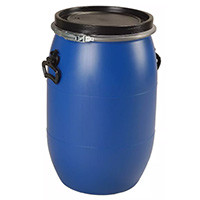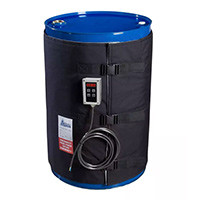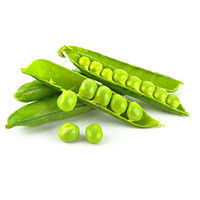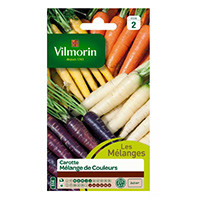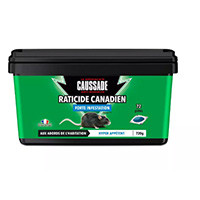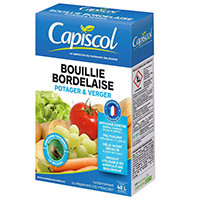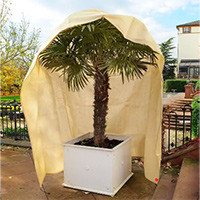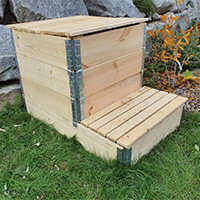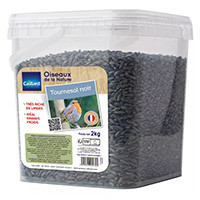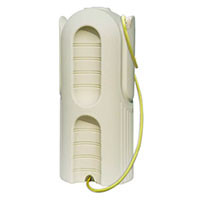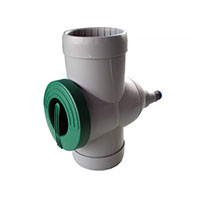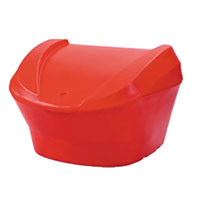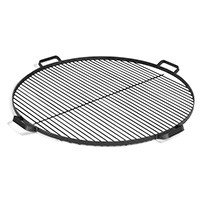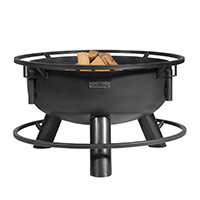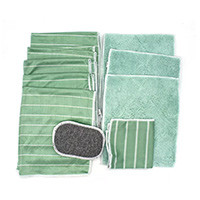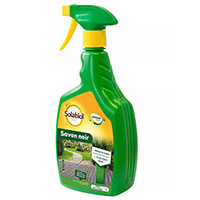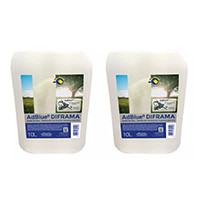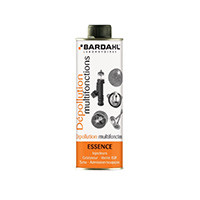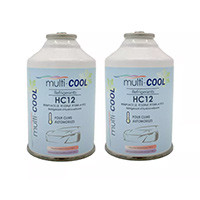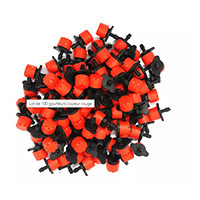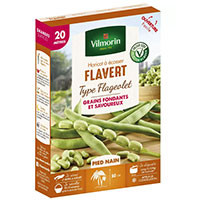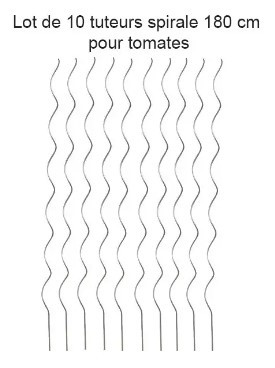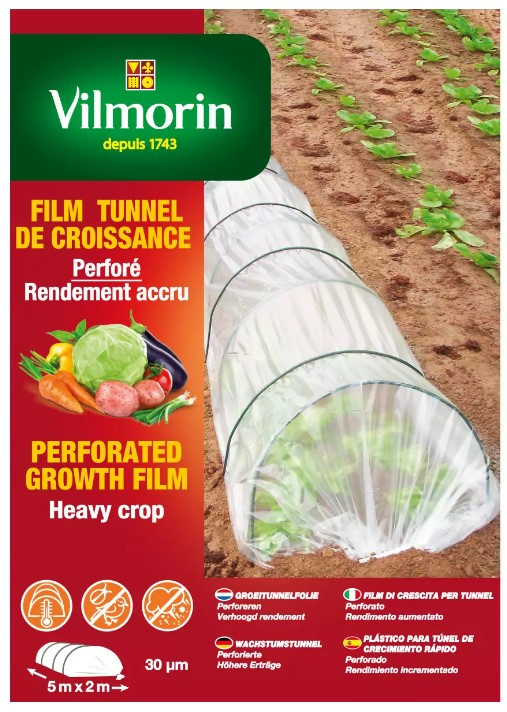Table of Contents
- What is Bordeaux porridge?
- Historical origins and evolution of its use
- Fungicidal and preventive properties
- Benefits for plants and soil
- Mechanism of action against plant diseases
- Studies and research supporting its effectiveness
- Types of Plants and Crops Benefiting from Its Application
- Detailed instructions for correct and safe use
- When and How to Apply for Maximum Effectiveness
- Recommended dosages according to specific needs
- Safety measures for the user and respect for the environment
- Regulations and Restrictions on Use
- Comparison with Other Fungicide Products
- Latest innovations and research in the field of eco-friendly fungicides
- Conclusion
Let's dive into the very essence of Bordeaux mixture, this agricultural phenomenon that has survived through the ages without losing an ounce of its effectiveness. At first glance, the term "bouillie bordelaise" could evoke a traditional French recipe, a dish simmered with love in the kitchens of Bordeaux. However, behind this name hides not a dish, but an ancestral remedy against plant diseases. His recipe? A bold blend of copper sulfate and lime, combined with water to form a bluish suspension, ready to fight the fungal and bacterial invasions that threaten our crops.
What is Bordeaux porridge?
At its core, Bordeaux mixture is a fungicidal and bactericidal food. Its active ingredient, copper sulfate, is a potent antimicrobial that, when dispersed on plant leaves, vehemently attacks pathogens such as fungi and certain bacteria. Lime, added to the mixture, plays a crucial role in neutralizing the acidity of the copper, making it less harmful to plants and beneficial microorganisms in the soil. This duality between strength and softness makes Bordeaux porridge a solution of choice, capable of protecting without destroying.
Historical origins and evolution of its use
The history of Bordeaux mixture dates back to the end of the 19th century in the Bordeaux region, as the name clearly indicates. At that time, French vineyards were decimated by downy mildew, a dreaded fungal disease that attacked the leaves and fruits of the vine, threatening the very existence of French wine. It was in this context of crisis that Bordeaux mixture was discovered, almost by chance, by scientists and winemakers desperate to find a solution to save their harvests. Its effectiveness against downy mildew was quickly proven, transforming this mixture into a pillar of crop protection not only in France but throughout the world.
Over the years, its use has spread far beyond vineyards, becoming a versatile protector in gardens and farms. The evolution of its use reflects changes in agricultural practices and the increasing importance placed on environmental and food security. Today, Bordeaux mixture is valued not only for its effectiveness against a wide range of plant diseases but also for its compatibility with the principles of organic farming, offering a less harmful treatment option compared to synthetic chemicals.
This transition of Bordeaux mixture from a crisis remedy for Bordeaux vines to a universal ally in the fight against plant diseases, is a testament to its incredible adaptability and unwavering importance in the arsenal of the modern farmer. Its ability to evolve while remaining true to its origins is a fine example of how traditional solutions can find their place in the contemporary world, combining history, science, and respect for the environment.
Fungicidal and preventive properties
Bordeaux mixture, thanks to its main component, copper sulphate, has powerful fungicidal properties. It creates a protective barrier on the surface of plants, preventing fungal spores from germinating and developing into disease. It is not so much a question of cure after the onset of the disease, but rather of prevention. By coating the leaves, stems, and fruits with a layer of this bluish potion, the enemy is effectively prevented from taking hold. It is a proactive defense strategy, designed to prevent the garden from turning into a battlefield between plants and pathogens.
But why is prevention so crucial? In the world of plants, just as in humans, it is often much easier and cheaper to prevent a disease than to treat it once it has taken hold. A judicious application of Bordeaux mixture before conditions become disease-friendly can save an entire crop. Think of it as vaccinating your plants against the most common diseases; A little effort for a lot of peace of mind.
Benefits for plants and soil
Beyond its fungicidal properties, Bordeaux mixture has several advantages for plants and the soil. First, unlike some harsh chemicals, it is less likely to cause collateral damage to the beneficial flora and microorganisms in the soil that play a critical role in plant nutrition and soil health. Maintaining a strong ecosystem under and around plants ensures more vigorous growth and greater resilience to environmental stresses.
In addition, the use of Bordeaux mixture is in line with the principles of organic farming, allowing environmentally conscious farmers and gardeners to protect their crops without compromising their commitment to sustainable practices. This means that not only are your plants effectively protected, but you are also helping to preserve a healthy environment for future generations.
In short, choosing Bordeaux mixture means opting for a proven solution that respects the health of the plants, the vitality of the soil, and the balance of the ecosystem. It is a way of recognising that in our relationship with nature, prevention and mutual respect are the keys to harmonious and prosperous coexistence.
Mechanism of action against plant diseases
Bordeaux mixture works thanks to a mechanism of action that attacks the very basis of pathogen development. Copper sulfate, a key component of the mixture, is a copper ion that, when released on the surface of plants, becomes toxic to fungi and some bacteria. Copper disrupts enzymes essential for cellular respiration in pathogens, preventing them from producing the energy needed for their growth and reproduction. This action is not limited to a superficial effect; It creates a protective barrier that prevents pathogen spores from germinating on leaves, stems, and fruits.
What's fascinating about Bordeaux mixture is its ability to provide long-lasting protection without penetrating plant tissues, which minimizes the risk of toxicity to the plant itself and to the consumers of the treated fruits or vegetables. The presence of lime in the mixture helps regulate acidity, ensuring that the pH of the solution remains optimal for copper efficiency while protecting the plant from potential copper excess.
Studies and research supporting its effectiveness
The effectiveness of Bordeaux porridge is not based solely on anecdotes or centuries-old agricultural traditions. Numerous studies and scientific research have been conducted to understand and quantify its action against plant diseases. This research has shown that Bordeaux mixture is particularly effective against a wide range of fungal diseases, such as downy mildew, apple scab and peach leaf curl, to name a few. The results of the studies highlight not only the effectiveness of the treatment but also its low environmental impact compared to synthetic fungicides, making Bordeaux mixture a preferred choice in sustainable and organic farming practices.
This research also contributes to refining application recommendations, in terms of timing, dosage and frequency, to maximize the effectiveness of the treatment while minimizing negative impacts. They help to understand how environmental conditions, such as humidity and temperature, influence the effectiveness of Bordeaux mixture, allowing farmers and gardeners to use it in a more informed and strategic way.
Thus, the science behind Bordeaux porridge is as robust as its historical heritage is rich. It is not just a legacy of the past but a contemporary solution, supported by research, to sustainably and effectively protect crops against disease. Its action, based on biological and chemical principles, confirms its status as a pillar in the integrated management of plant diseases, combining tradition and innovation for a greener future.
Types of Plants and Crops Benefiting from Its Application
Bordeaux porridge is not selective; It is effective on a wide range of plants, providing protection against the most common diseases that plague gardens and fields. From the vines, historically the first beneficiaries of its virtues, to fruit trees such as apple, pear and peach trees, often victims of scab or blister, it acts as a shield. Vegetable crops are not to be outdone: tomatoes, potatoes, and onions, frequently attacked by mildew, also find refuge under its protective wing. Even garden ornaments, such as roses and hydrangeas, can benefit from her care to fight fungal diseases.
This wide applicability makes Bordeaux mixture indispensable in the arsenal of any gardener or farmer who is aware of the health of their plants. However, as each type of plant has its own unique needs and sensitivities, the application of Bordeaux mixture should be adjusted accordingly, highlighting the importance of a tailored approach.
Detailed instructions for correct and safe use
For an effective and safe use of Bordeaux mixture, several steps and precautions are essential. First of all, the preparation of the solution must respect the recommended dosages, generally around 1% concentration for preventive treatments and up to 3% for more severe cases. An application that is too concentrated could damage the plants, while a solution that is too diluted would be ineffective.
The timing of application is also crucial: ideally, it should be done outside of hours of strong sunlight to avoid leaf burn, and before the onset of disease or just after the first signs. Consistency is key, with applications to be repeated after heavy rains or according to the life cycle of the target pathogen.
Finally, personal safety should not be neglected. Gloves, goggles, and a mask may be required to avoid direct contact with the solution, protecting the user from potential irritation.
Following these detailed instructions not only ensures the maximum effectiveness of Bordeaux mixture in crop protection, but also preserves the health of the user and the integrity of the environment. In sum, Bordeaux mixture, when used judiciously, becomes a valuable tool for maintaining healthy and vigorous plants, reflecting the union of ancestral wisdom and modern agricultural practices.
When and How to Apply for Maximum Effectiveness
Timing is one of the most critical aspects in the use of Bordeaux porridge. The idea is to focus on prevention rather than cure. Application should therefore be anticipated, ideally before the conditions favourable to the development of diseases are met. For example, an application in early spring can protect crops from common fungal infections during the wet months. Similarly, monitoring weather forecasts to anticipate periods of rain can help plan preventative applications before these conditions promote disease development.
The method of application is equally important. Uniform coverage of the plant is essential to ensure that protection is complete. Using a sprayer can reach the leaves, stems, and even the soil around the plants, creating a protective barrier against pathogens. For fruit trees and large plants, be sure to reach the top and lower areas for all-around protection.
Recommended dosages according to specific needs
The dosage of Bordeaux mixture varies depending on the susceptibility of the treated plants and the severity of the disease threat. As a general rule, a 1% solution (i.e. 10 grams of slurry per 1 liter of water) is sufficient for preventive application on most crops. For situations where the disease is already present or if conditions are particularly conducive to its development, a concentration of up to 3% may be necessary. However, it is crucial not to exceed this concentration to avoid the risk of phytotoxicity, especially for the most sensitive plants.
It is also important to note that needs can vary within a garden or farm. Plants already affected by previous diseases, young shoots, and some more delicate species may require adjustments in the concentration or frequency of applications. Keeping a diary of your treatments can be helpful in adjusting your practices based on observed results and annual weather conditions.
All in all, a thoughtful and well-informed application of Bordeaux mixture is the key to effectively protecting your crops from disease, while preserving the delicate balance of your garden. Respecting the timing, applying carefully, and adjusting the dosage according to the specific needs of your plants are crucial steps to get the most out of this precious gardener's ally.
Safety measures for the user and respect for the environment
When handling and applying Bordeaux mixture, it is imperative to take certain precautions to protect both the user and the environment. Wearing personal protective equipment (PPE) such as gloves, goggles, and a respirator mask is strongly recommended to avoid direct contact with the product. This is especially important during solution preparation and application, when the risk of particulate inhalation or skin contact is highest.
In addition to personal protection, it is crucial to use Bordeaux mixture in a way that limits its impact on the environment. This includes avoiding over-application and adhering to recommended dosages, to reduce the risk of runoff that could contaminate waterways and affect aquatic wildlife. Similarly, it is advisable to apply the product in calm weather to avoid wind dispersal to non-target areas, thus protecting surrounding plants and habitats from beneficial insects.
Regulations and Restrictions on Use
Bordeaux mixture, although accepted in organic farming, is subject to strict regulations aimed at regulating its use in order to protect both human health and the environment. These regulations can vary from country to country, so it's essential to find out about the specific guidelines in your area. Generally, they define the crops to which the product can be applied, the maximum permitted dosages, as well as the recommended application periods.
In addition, some countries or regions may impose restrictions on the total amount of copper that can be applied per hectare per year, with the aim of limiting the accumulation of copper in the soil. Repeated and long-term use of Bordeaux mixture can indeed lead to a copper content in the soil above levels considered safe, affecting its quality and biodiversity. Respecting these limits is therefore essential to ensure the sustainable use of Bordeaux mixture, which protects crops without compromising the health of the soil and surrounding ecosystems.
Comparison with Other Fungicide Products
Bordeaux mixture, although effective and approved for use in organic farming, has some limitations, including its potential to accumulate in the soil and its impact on aquatic fauna. Faced with these challenges, other fungicide products have been developed, offering interesting alternatives. For example, sulfur-based fungicides remain a popular option, especially for the treatment of diseases like powdery mildew, thanks to their low risk of accumulation in the environment and their effectiveness against a wide range of pathogens.
Other innovations include biological fungicides, which use living organisms or their metabolites to control plant diseases. These products, often derived from beneficial bacteria or fungi, work by colonizing the plant and preventing the establishment of pathogens, or by stimulating the plant's natural defenses. Their specificity of action and biocompatibility make them promising candidates for sustainable agriculture, although they may require special conditions to be fully effective.
Latest innovations and research in the field of eco-friendly fungicides
Research continues to explore new avenues for developing eco-friendly fungicides, with a particular focus on efficacy, environmental safety, and sustainability. Among the most promising avenues are antimicrobial peptides, nanotechnology and genetic engineering. Antimicrobial peptides, for example, offer a potentially powerful solution thanks to their ability to specifically target pathogens without harming non-target organisms.
Nanotechnology also opens up interesting horizons by enabling the creation of controlled-release fungicide formulations, thereby minimizing over-application and reducing environmental impact. These nanoparticles can be designed to specifically target sites of infection, increasing the effectiveness of treatment while decreasing the doses needed.
Finally, genetic engineering offers the possibility of developing plants with increased disease resistance, thus reducing the need for external fungicide treatments. By identifying and modifying the genes responsible for disease resistance, researchers hope to create plant varieties that can naturally defend themselves against pathogens.
These advancements represent an exciting evolution in plant disease management, promising safer and more sustainable solutions for tomorrow's agriculture. While Bordeaux mixture continues to play an important role, these innovations pave the way for crop protection to be more harmonious with the environment, highlighting the importance of continued research and the adoption of innovative agricultural practices.
Conclusion
By going through the twists and turns of the history and applications of Bordeaux mixture, we rediscovered an ancestral solution that has been able to reinvent itself over time to remain a reference in the protection of crops against diseases. Its simple composition, its recognized effectiveness and its compatibility with organic farming give it a special place in the hearts of farmers and gardeners concerned about preserving the health of their plants while respecting the environment.
However, the evolution of scientific knowledge and ecological awareness are pushing us to explore new avenues. Alternatives and innovations in the field of eco-friendly fungicides, whether sulphur-based products, biological solutions or the latest advances in nanotechnology and genetic engineering, demonstrate the willingness to adapt our agricultural practices to contemporary challenges.
This article highlighted the importance of responsible and informed use of Bordeaux mixture, recalling the precautions to be taken for the health of the user and the protection of the environment. It also opened the door to future possibilities, where research and innovation continue to play a key role in developing sustainable solutions for plant disease management.
Bordeaux mixture, with its rich heritage and proven effectiveness, will continue to be a valuable tool for current and future generations of farmers and gardeners. However, its use must be part of a broader integrated crop management approach, where diversification of disease control methods and the adoption of sustainable agricultural practices will be essential to ensure crop health, food security and the preservation of our planet.
In this quest for a balance between tradition and innovation, Bordeaux porridge reminds us that the answers to the agricultural challenges of our time often lie in a harmonious combination of ancestral knowledge and scientific advances, guided by a deep commitment to sustainability and respect for nature.




